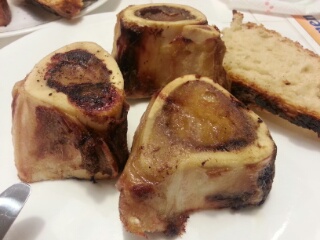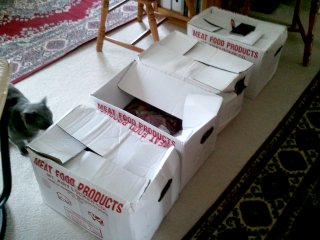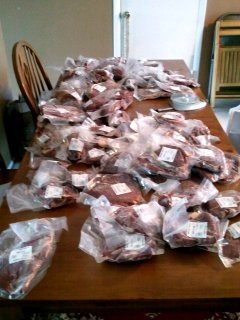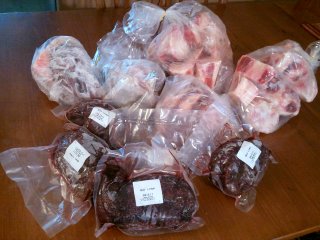With the snow piled up high and thick outside, it’s hard to believe that Breezy Willow’s spring CSA starts up next week. It really feels like I need the CSA to prod me into posting. Every year I promise myself that I’m going to post during the winter break, talk about Thanksgiving frenzy and Christmas cookies, not to mention the soups and scones and winter braises that are filling my kitchen… and yet I never seem to get myself together enough to even log onto the site. Too easy to put it off, I guess.
The biggest news: over this past winter — just about a week after the last time I posted on this blog, actually — our household expanded by one new member. With the new little girl, we have now returned to gender parity. Since there’s now more than one kid, I’m promoting the boy formerly known as “the kid” to his new title, “Little Prince.” He kind of behaves like one anyway…
His new baby sister (little princess?) is a good eater so far. I look forward to introducing her to purees in just a couple more months; too early for the new spring/summer fruits, but there should have plenty of cold storage apples and carrots to mush up for her.
Everyone’s sick of winter by now but I confess I still love it. I still love wrapping up in scarves and soft knits to go outside, and I love looking out the window into a winter wonderland, all the trees and branches outlined, a simple palette of brown and pine and gorgeous, fluffy white.
Since daycare was closed for yesterday’s snowstorm, we all stayed home. We had some marrow bones from our Wagon Wheel Ranch cow in the freezer, so we roasted those up for a nice post-shoveling treat. Roasting marrow is so easy: set the bones cut-side-up on a pan, sprinkle with salt and pepper, put them in a 450 degree oven until the marrow starts to bubble – 20 minutes or so. Once it’s cooked you can just scoop it out with a spoon… or a piece of bread.
We went with the Speedy No-Knead Bread. Easy as anything, and perfect for a snow day: mix flour, water, yeast, and salt in the morning, let it rise 4 hours, dump it onto an oiled pan and fold it over, let the dough sit half an hour more, dump it into a preheated pot (the pot has to be fiery hot, or your bread will stick) and bake for about an hour, uncovering the pot halfway through. It creates a rustic, round loaf with a toasted crunchy exterior and a chewy, bubbly interior, and we ate the entire loaf in a day. Four common ingredients and a heated pot, barely any work, and out of that you get a wonderful loaf of artisan bread. Baking is like magic.

After scraping out the marrow bones with bread, we dumped the empty bones into a stockpot full of water to extract a rich, fragrant stock. It simmered late into the night, and then I just put the entire covered pot outside on the patio to cool down. Winter: nature’s freezer. We’ll bring in the pot tonight, skim off the fat, strain out the solids, and pack the resulting stock into the freezer for later.
And as a bonus, the hot oven (450 F, for both bones and bread) heated up the inside of our house quite nicely, and the simmering bone stock on the stove filled every room with a delicious beefy scent. Really, winter is the best.



